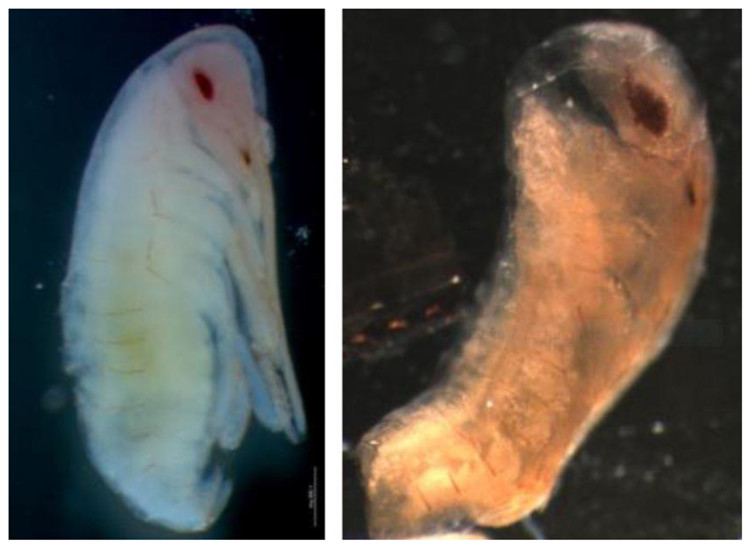
Why do adult cockroaches and their nymphs look nearly identical, while caterpillars are vastly different from butterflies? What are the mechanisms of insect metamorphosis? According to scientists from the Institute of Evolutionary Biology in Barcelona, Kyoto University and JU Faculty of Biochemistry, Biophysics and Biotechnology, the evolutionary differences in this process may be caused by the levels of E93 protein in insect embryos.
‘The mystery of insect metamorphosis has intrigued humans since time immemorial. In the last then years, we have made great strides in this area, discovering many details regarding this process’, said Prof. Xavier Bellés from the Spanish National Research Council.
‘The progress in investigating insect metamorphosis made in the recent years was largely made due to new techniques of gathering genomic data and analysing them using computer tools’, added Dr Guillem Ylla, head of the Laboratory of Bioinformatics and Genome Biology of the JU Faculty of Biochemistry, Biophysics and Biotechnology.
Discovering that the E93 protein determines the transformation of young insects into adults in all species, regardless of the type of metamorphosis, was an important step in solving the mystery of the process. Nevertheless, as Prof. Prof. Xavier Bellés points out, it was still unclear how simple (or gradual) metamorphosis evolved into complete metamorphosis and what genetic factors caused it.
The latest issue of the Proceedings of the National Academy of Sciences (PNAS) features a paper on the results of a research project carried out by scientists from the Jagiellonian University and the Institute of Evolutionary Biology in Barcelona, in which they shed more light on the issue. As it turns out, the accumulated level of E93 in developing insect embryos may be critically important to the process of metamorphosis.
The paper states that the E93 protein is crucial to the correct development of embryos of insects that undergo simple metamorphosis, such as cockroaches. In the case of insects undergoing complete metamorphosis, such as fruit flies, E93 is not expressed in the embryo.
‘These observations led us to the conclusion that the presence of E93 in embryos is necessary for insects to develop into a nymphs similar to adults. Consequently, the lack of E93 expression in embryos led to the evolution of complete metamorphosis, in which young insects are dissimilar to adults’, explained Dr Guillem Ylla.

Decreased levels of E93 at the start of the embryonic development causes the cockroach nymph (Blattella germanica) on the right to develop abnormally. The left picture shows a correctly developing nymph.
Dr Gabriela Machaj, one of the paper’s co-authors, has carried out an extensive analysis of hundreds of transcriptomic data sets gathered from several dozen insect species. The results of her research show that E93 is present the embryos of insects undergoing simple metamorphosis and absent in the embryos of the other group.
‘By analysing a large amount of transcriptomic data, we’ve managed to prove that our preliminary observations regarding several model insect species were, in fact, true for all insects’, said Dr Gabriela Machaj.
‘The beauty of this research project lies in the fact that we’ve discovered a certain regularity in the natural world, and that’s precisely what we strive for as scientists’, stressed Dr Ylla.
According to the paper’s authors, it will lead to a paradigm shift in the research of metamorphosis. They hope that their discovery will lead to a better understanding of the regulation and evolution of this process.
Two metamorphosis strategies
In the case of simple metamorphosis, an egg is laid, and after a certain period of time a nymph emerges from it, looking similar to an adult insect. The nymph goes through several stages before finally becoming capable of reproduction. Complete metamorphosis, meanwhile, involves an egg that hatches into a larva dissimilar to an adult specimen. The larva grows and enters a transitional state known as the pupa, later becoming a fully grown adult. This type of metamorphosis is advantageous, since larvae do not compete with adults for food, which is not true for nymphs.
In all insects, the E93 protein promotes transitioning into adults in the last stage of young insects’ development. The results of the research published in PNAS suggest that E93 is involved in the development of nymphs, as they are effectively miniature adults. The authors hypothesise that reduced E93 expression was necessary for the evolution of larvae dissimilar to adult insects and, consequently, the evolution of complete metamorphosis.
The paper published in PNAS is the result of international collaboration between Institute of Evolutionary Biology in Barcelona, Kyoto University and the Jagiellonian University in Kraków.





